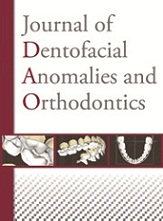Article contents
Advantages of symphyseal distraction in the treatment of Brodie’s Syndrome
Published online by Cambridge University Press: 20 January 2014
Abstract
Orthodontists and maxillo-facial surgeons are very aware of the different therapeutic options for the correction of maxillary transverse deficiencies. But what about mandibular transverse deficiencies? A number of dentofacial orthopedic mandibular expansion techniques have been suggested, but they often have a tendency to relapse. Symphyseal distraction is the easiest solution for the correction of mandibular transverse defects, particularly in cases of a major deficiency such as Brodie’s Syndrome. In addition to recreating a physiologic occlusion, this technique makes it possible to considerably increase the width of the bony and soft tissue that not only improves the patient’s function and esthetics, but also helps to ensure long-term occlusal stability as well.
- Type
- Research Article
- Information
- Copyright
- © RODF / EDP Sciences
- 1
- Cited by




